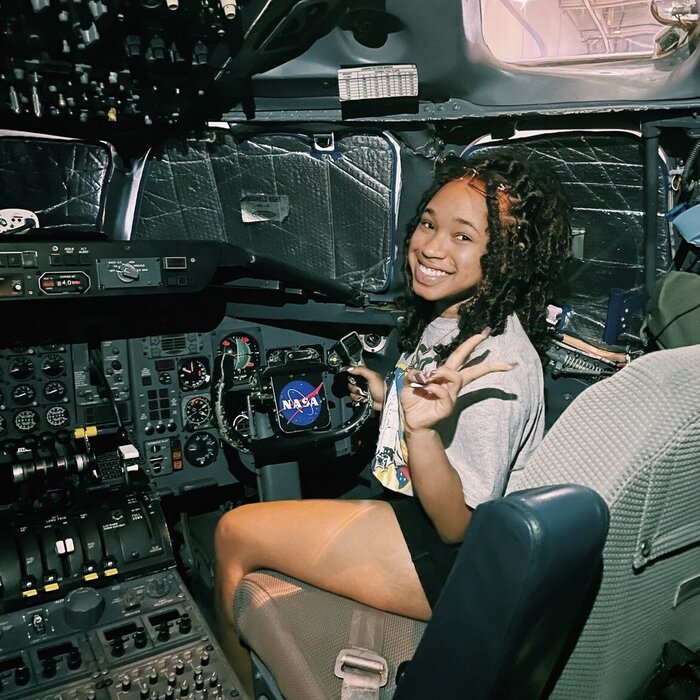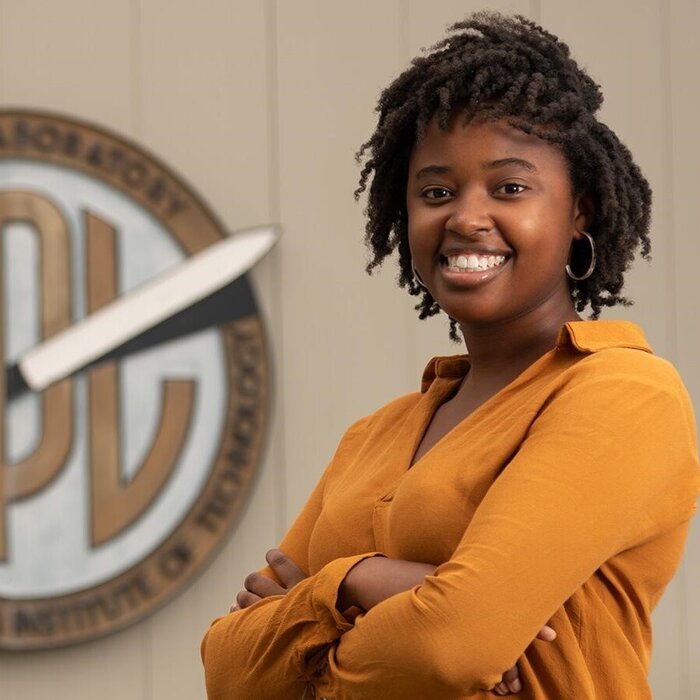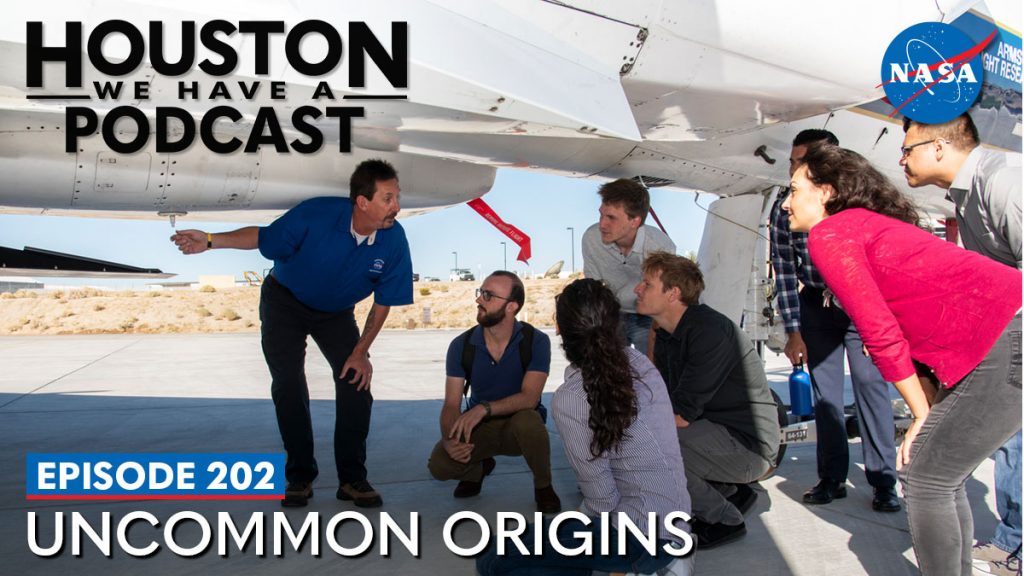
Despite the telework nature of this summer’s internship, Kyndall said that even from her home in Dayton, Ohio, she has been able to foster connections with JPL employees and gain valuable experience in her role working on software for an Earth-science instrument that will help NASA understand how different types of air pollution, which can cause serious health problems, affect human health.
And thanks to her mentor, Operations Systems Engineer Janelle Wellons, Kyndall was able to get the type of hands-on NASA experience that’s been hard to come by since the pandemic.

‘My mentor Janelle suggested that I come visit Los Angeles for a few days this summer, and I was finally able to visit and explore the city for the first time,’ Kyndall said. ‘I am also super grateful for her setting up a tour at the NASA Armstrong Flight Research Center where we were able to view, tour, and learn lots of interesting facts about NASA’s historical aircraft.’
Janelle splits her time operating instruments aboard several Earth-observing missions. She has been involved in previous years’ roundtable discussions with historically black colleges and university interns. Being from the East Coast herself, Wellons remembers having little awareness of NASA’s Jet Propulsion Laboratory as a potential career landing spot while studying at Massachusetts Institute of Technology.
‘Getting visibility and actually partnering with these schools to make these internships happen is so important . . . [internships] benefit JPL by broadening the talent pool and diversity of our workforce,’ Janelle said.
While interning under Janelle, Kyndall worked on the Multi-Angle Imager for Aerosols (MAIA) project. MAIA will make radiometric and polarimetric measurements needed to characterize the sizes, compositions and quantities of particulate matter in air pollution.
‘I can confidently say I wouldn’t have grown and learned as much as I have without their [mentors] constant feedback, support . . . and guidance.’
Do YOU want to be on the NASA team? Check out our website to learn more about the Artemis Generation and find information on eligibility and application steps. Want more content? Check out five important tips and words of advice from women interns in STEM.
Excerpts taken from the features writer for Internal Communications at NASA’s Jet Propulsion Laboratory, Taylor Hill, and his article on JPL Internship Program Expanding Diversity in STEM.
Claire A. O’Shea / NASA Johnson Space Center





